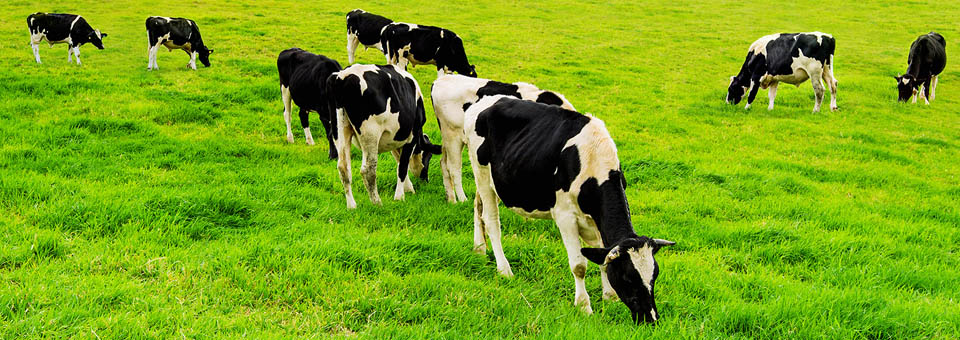To “protect the health of its citizens,” the state of Wisconsin is pulling a certain food from its store shelves.
And store owners who try to sell it can face up to six months in jail and hefty fines.
In the meantime, Wisconsin residents are acting like the bootleggers of the early 20th century. They’re taking day trips across state lines and returning with suitcases and coolers full of it.
The “dangerous” product that’s under attack is Kerrygold Irish butter.
Let me explain…
Back in 1970, Wisconsin passed a law requiring all butter to be approved by a panel of “experts.” The state wants you to think the panel is protecting consumers. But the truth is Wisconsin is a big dairy state. And Kerrygold is giving industrial butter makers a real run for their money.
Big Dairy just can’t compete with Kerrygold. You see, this butter is different from most waxy sticks you find in your supermarket. It’s made with milk from cows that are allowed to roam free on pastures. These grass-fed cows produce milk that makes all the difference in the world when it comes to butter…
The first thing you’ll notice is that grass-fed butter has a rich, yellow color. When a cow lives on a grass diet, it gets higher levels of beta-carotene. That’s the plant form of vitamin A and it makes the butter yellow. Vitamin A is crucial for healthy teeth, bones, soft tissue, skin and mucus membranes. It’s critical for night vision. And it is essential for hormone balance.
Studies show that milk from grass-fed cows is also higher in essential fatty acids and
fat-soluble vitamins. Compared to grain-fed animals, products from grass-fed animals have:- 2 to 10 times more omega-3 fats
- 3 to 6 times more vitamin E1
- More B vitamins and vitamin D and K2
- More CoQ10 and zinc
- More powerful antioxidants like glutathione and superoxide dismutase (SOD).2
In other words, grass-fed butter is a health food. It may even be one of your best defenses against heart disease…
For almost 100 years, the government has been trying to get you to avoid butter. They claim it’s deadly for your heart.
But the truth is that grass-fed butter is actually heart healthy. The secret is a fat called conjugated linoleic acid (CLA). Grass-fed butter is five times higher in CLA than regular butter.3
CLA is an important nutrient that has cancer-preventing properties. It boosts the immune system and fights multiple diseases. It also helps your body store calories as muscle instead of fat. It might even stop a heart attack cold.
In one Harvard study, researchers looked at the levels of CLA in the fat tissue of 1,813 heart attack patients. They compared them to 1,813 patients who had never had a heart attack.
The results were stunning… People who ate the most full-fat dairy like butter had the highest levels of CLA compared to those who ate the least. And they were 49% less likely to have a heart attack.4
Other studies show that people eating more full-fat dairy like butter have a 69% lower risk of dying from heart disease.5 They also have a lower risk of having a stroke.
Unless you live in Wisconsin, you can probably find organic, grass-fed butter in your local farmers market. And many regular supermarkets are now carrying Kerrygold grass-fed butter.
Start Your Day with Hot Buttered Coffee

My researcher Rob always starts off his day wth a cup of butter coffee.
I like to use grass-fed butter along with coconut oil to jumpstart my day. Both of these are high in medium-chain triglycerides (MCTs). Unlike other fats, MCTs are tiny enough to enter a cell’s mitochondria directly. Your cells use the MCTs for instant energy instead of storing it as fat for use later.
To give your day a high-energy start, I recommend drinking a cup of coffee with grass-fed butter and coconut oil. It energizes you, stimulates your metabolism and boosts your mental focus.
I like to whip butter and coconut oil to form a creamy drink similar to a latte. Here’s how to make it:
Ingredients:
- 1 cup of hot brewed organic coffee
- 1 Tbsp grass-fed butter
- 1 Tbsp coconut oil
Directions:
- Pour your coffee into a blender with butter and coconut oil.
- Blend on high speed for about 10 to 20 seconds until light and creamy.
- Sprinkle some cinnamon or cacao powder on top.
- If you don’t have a blender sitting out on your counter, don’t worry. Just grab a fork and whip the ingredients together until it’s frothy. Enjoy!
To Your Good Health,
![]()
Al Sears, MD, CNS
1. Smith G. “Dietary Supplementation of Vitamin E to Cattle to Improve Shelf-Life and Case-Life for Domestic and International Markets.” Colorado State University.
2. Daley CA., et al. “A review of fatty acid profiles and antioxidant content in grass-fed and grain-fed beef.” Nutr J. 2010 Mar.
3. Dhiman TR., et al. “Conjugated linoleic acid content of milk from cows fed different diets.” J Dairy Sci. 1999 Oct.
4. Smit LA., et al. “Conjugated linoleic acid in adipose tissue and risk of myocardial infarction.” Am J Clin Nutr. 2010 Jul.
5. Bonthuis M., et al. “Dairy consumption and patterns of mortality of Australian adults.” European Journal of Clinical Nutrition. 2010.

